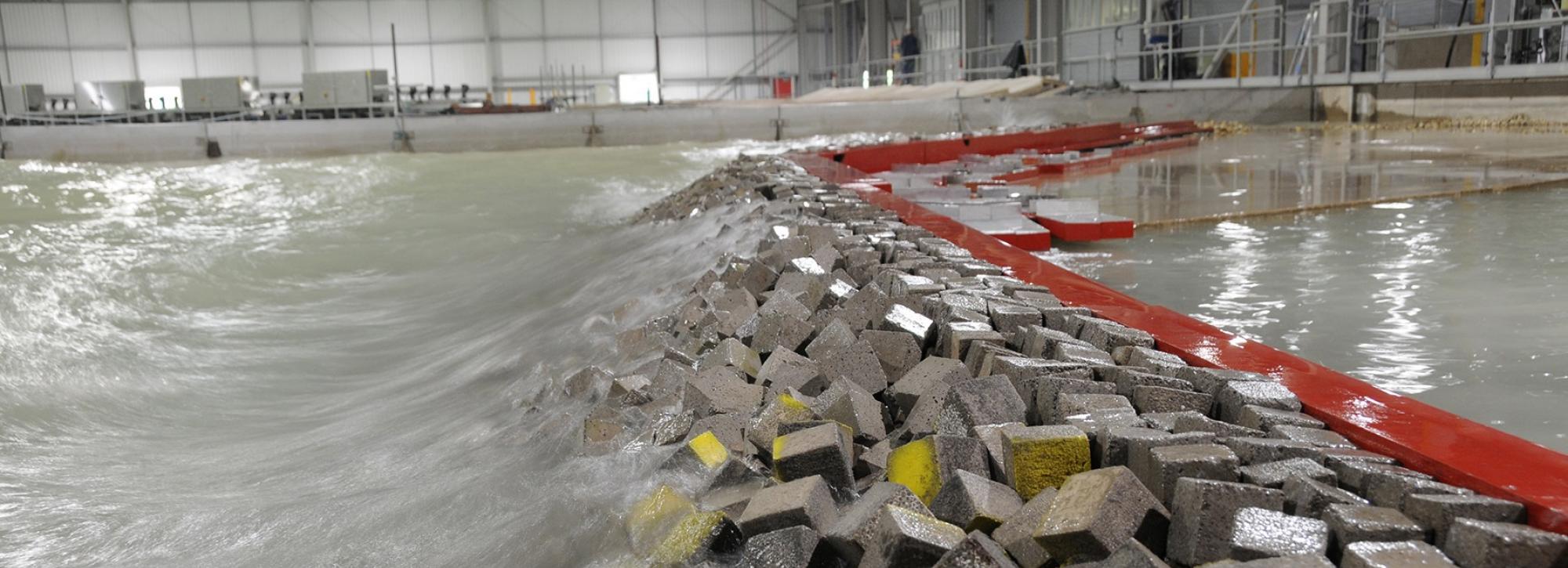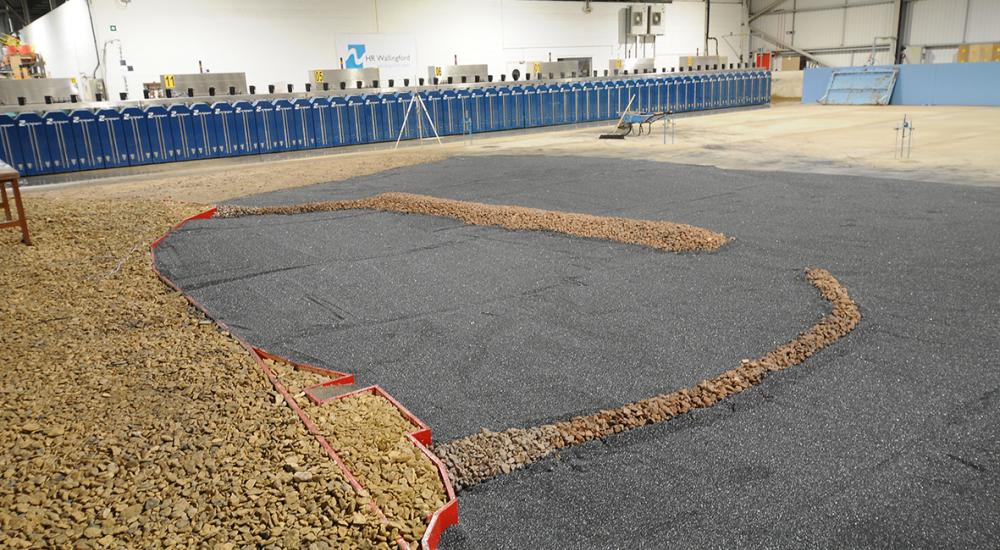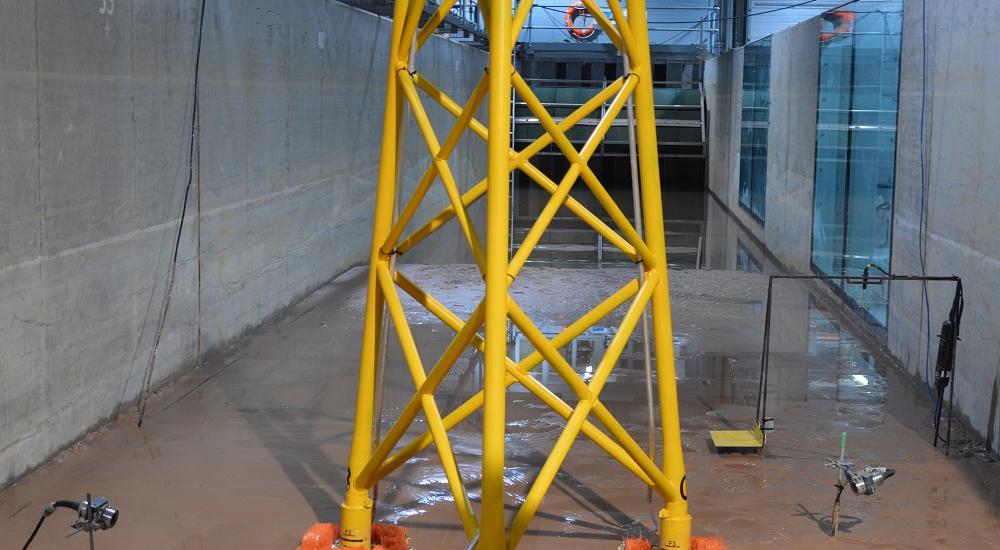
Accurate scaling for huge models has layers of complexity
Accurate scaling is vitally important for the huge models that are built and put through their paces in our physical modelling labs. In this article, Senior Engineer Dr Ian Chandler and Laboratory Manager Dr David Todd, explain why the task is so complex and how accuracy is ensured.
Projects worth tens or even hundreds of millions of pounds are put through their paces in our modelling hall to make sure designs are sufficiently robust to stand up to even the most demanding wave and current conditions. To ensure that the results obtained are accurate, repeatable, and reliable, the scaling of our physical models is of paramount importance.
The general rule with scaling is ‘the bigger the better’ as this moves the model closer to prototype (full-size) and limits the influence of scale effects. There is nonetheless no ‘one size fits all’ for scaling as physical models have many different uses, evaluating, for example: the impact of tsunami waves on buildings; sediment flows; swirl in pumping station chambers; air entrainment in drop shafts; coastal defences; and ship mooring and passing. There are other factors too that affect the scale we use, including the size of facility available; instrument types and measurement techniques; and the re-use of elements from previous models (e.g. the same structures for the second iteration of a design process).
The scale of our models therefore varies quite substantially. When testing erosion around the foundations of a wind turbine, we can use fairly large scaling, around 1:20, while we often build breakwaters that are to be tested for their performance at around scales of 1:40. A model beach to test a nourishment scheme is likely to be at a smaller scale, for instance 1:100 as it represents a larger area.

We cannot usually, however, scale all of the physical parameters in a single model by the same amount. While this would be the perfect scenario, there are limitations to what can be accomplished, for instance with gravity, water and some materials. While these can be varied in small size models under special circumstances, this is not feasible for the larger size that we specialise in. To account for this, we use scaling relationships to allow for the difference in parameters that cannot be replicated at a smaller size. These relationships have been derived and refined over decades and in some cases centuries.
A variety of different scaling techniques are used across the labs, dependent upon the area of interest. Froude scaling is commonly used for scaling waves, currents and ship studies, while scaling for sediment transport involves additional considerations due to the increase in attractive forces between sediment grains as grain size reduces.
Knowing and understanding the area of interest within the physical model is vital to ensuring that the model is scaled using the correct relationship. The models must accurately reflect the changes that would occur under full-scale conditions for the parameters of interest, so that the results can be used in the design process.
Breakwater scale complexities
As an example, the armour of a breakwater is often scaled for stability to ensure that the armour will become unstable under the same conditions at scale as it would at prototype. Conversely, in a test for armour stability, the core material (material within the breakwater beneath the armour layer) is scaled based upon permeability, to ensure that the level of energy reflection generated by the internal parts of the breakwater is not excessively high, as it would be were the core material scaled for stability rather than permeability. If the reflection generated were too high, the armour material would become unstable under smaller wave conditions, resulting in over-engineering of the breakwater with excessively large material, and potentially significantly increasing the construction costs.
However, we often test a partially constructed breakwater phase during which core material may be exposed at the surface, as the armour material has not yet been placed. Under these circumstances, scaling the core material for permeability would make the material too big, causing it to be more stable than would otherwise be expected. The core material must therefore be scaled for stability in this instance.
Understanding this sort of complexity in scaling is crucial to ensure the most accurate results from our tests, so we draw on our many years of expertise in the area. Another essential element is our vast modelling hall, with its variety of basins, flumes and free-standing models, which allows us to build at an optimum scale for the task in hand.
